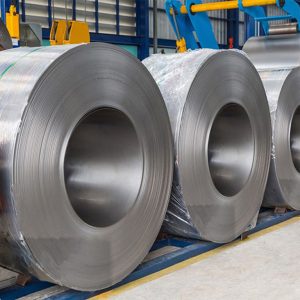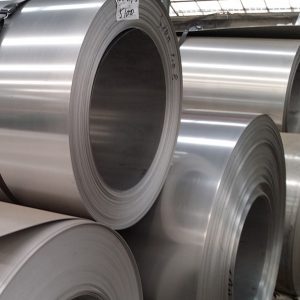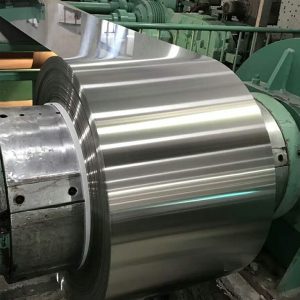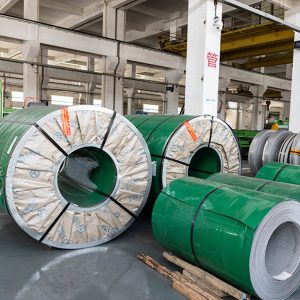What are the specific advantages of 316L stainless steel cold rolled coil in different application fields?
02-13-2025
316L stainless steel cold rolled coil has significant advantages in many application fields. The following will introduce you to the specific advantages of 316L stainless steel cold rolled coil in detail from different aspects:
1. Cost and surface quality advantages
● Lower cost: Compared with casting, powder metallurgy, additive manufacturing and forging, the cold rolling process cost of 316L stainless steel is lower. This makes cold rolled coils more competitive in cost-sensitive application fields. For example, in some large-scale industrial fields, cost reduction can significantly improve the market competitiveness of products.
● Good surface finish: The cold rolling process can give 316L stainless steel cold rolled coils a good surface finish. This advantage is particularly important in areas with high requirements for appearance, such as decoration, precision instrument manufacturing, etc. The smooth surface is not only beautiful, but also reduces the adhesion of dirt and impurities, making it easier to clean and maintain.
2. Mechanical properties advantages
● Strength improvement: The mechanical properties of 316L stainless steel can be significantly improved through processes such as severe plastic deformation (SPD) and large reduction cold rolling. For example, single-pass equal channel angular extrusion (ECAP) with 0.65 strain can increase the tensile strength of 316L stainless steel by 1.6 times, while large reduction cold rolling with 80% reduction and 1.65 strain can increase its tensile strength by 2.1 times. This high strength property makes 316L stainless steel cold rolled coil advantageous in applications that need to withstand large loads, such as mechanical structural parts, pressure vessels, etc.
● Strength-Plasticity Synergy: Intermediate Cold Rolling and Annealing: Through intermediate cold rolling and subsequent annealing, 316L stainless steel can obtain excellent strength-plasticity synergy. For example, the heterogeneous lamellar structure (HLS) in 316L stainless steel treated with low initial rolling strain is more stable, and its microstructure has lamellar recrystallized grain clusters and lamellar coarse grains mixed with nano twin bundles and ultrafine grains. High-strength steel has good synergistic effect of strength and plasticity, which mainly depends on the content of various microstructures in high-strength steel and soft/hard interface. High strength is obtained by hard ultrafine grains and nano twin bundles. At the same time, the back stress caused by the soft/hard interface also contributes to the improvement of strength. Due to the good ductility, it is attributed to the generation of a large number of forest dislocations in the soft structure and the generation of geometrically necessary dislocations around the soft/hard interface. It is particularly noteworthy that annealing 70% cold-rolled 316L stainless steel can simultaneously obtain high yield strength (similar to 820 MPa) and good uniform elongation (similar to 10.6%).
● Fine-tuning heterogeneous lamellar structure (HLS): The strength and ductility of 316L stainless steel can be controlled by fine-tuning its heterogeneous lamellar structure (HLS). HLS is produced by 85% cold rolling, which produces lamellar coarse grains sandwiched between a mixture of nanoparticles and nano twins. Fine-tuned HLS was performed by performing at 750 °C for 5 - 25 min, resulting in a varied fraction of nanoparticles, nanotwins, lamellar coarse grains and recrystallized particles. During tensile testing, a large number of geometrically necessary dislocations were generated near the heterostructure interface to coordinate the deformation between soft and hard domains, which resulted in high back stress to achieve an excellent combination of strength and ductility. For the optimized HLS sample, an optimal high yield strength of 1 GPa similar to the elongation of 20% was obtained.
● Low Strain Cold Rolling: Low strain cold rolling (rolling strain of 30%) can also achieve a good combination of strength and ductility of 316L stainless steel. The fabricated steel sheets showed maximum yield strength and ultimate tensile strength values of 1045 and 1080 MPa, respectively, with a uniform elongation of 7%. The experimental results confirm that the high density of dislocations, strain-induced martensitic phase and deformation twins contribute to the high strength of the rolled stainless steel. In addition, its good ductility can be attributed to the strain-induced martensitic transformation and deformation twins.
3. Corrosion resistance advantages
● Excellent resistance to intergranular corrosion and pitting corrosion: 316L stainless steel cold-rolled coil has excellent resistance to intergranular corrosion and pitting corrosion, and its comprehensive corrosion resistance is better than 304 stainless steel. This makes it have a wide range of applications in fields with high requirements for corrosion resistance, such as chemical industry, marine engineering, and medical equipment. For example, in the field of medical equipment, good corrosion resistance can ensure the safety and reliability of equipment in the human body environment.
● Surface treatment optimizes corrosion resistance:
Sandblasting and surface finishing: Sandblasting and surface finishing of cold-rolled 316L stainless steel can optimize its corrosion resistance. Sandblasting will produce a near-surface deformation layer containing compressive residual stress on the surface, increase surface roughness, and thus reduce corrosion resistance. However, the final finishing treatment after sandblasting can obtain a microstructure with compressive near-surface residual stress, reduced surface roughness, and improved local corrosion resistance.
4. Process adaptability advantage
Process research and product trial production: Combining the characteristics of 316L steel, the rolling, annealing and pickling processes are studied and the process parameters are determined to form a trial production plan. Reasonable process design ensures the successful completion of the trial production of 316L (2B) steel 0.55mm×1219mm specification products. The plate shape, thickness accuracy, mechanical properties and surface quality of the finished product meet the requirements for making heat exchanger plates. The inspection results of various indicators of the finished product show that the order requirements are fully met and recognized by users. This shows that 316L stainless steel cold-rolled coil has good process adaptability and reliability in specific industrial fields, such as stainless steel cold rolling production.
Conclusion
316L stainless steel cold-rolled coil has broad application prospects in different application fields due to its advantages in cost, surface quality, mechanical properties, corrosion resistance and process adaptability.









